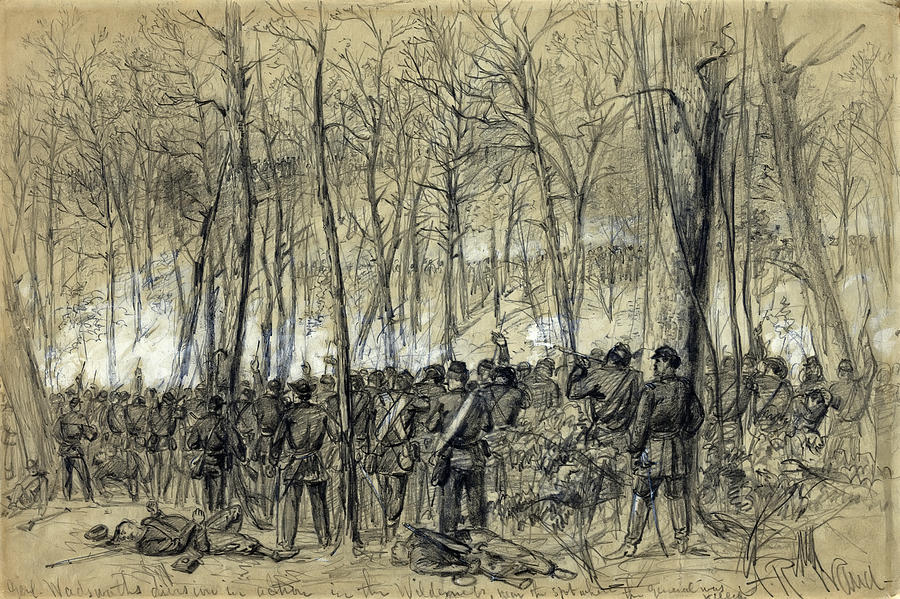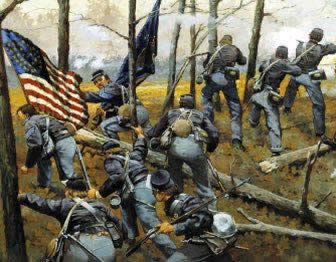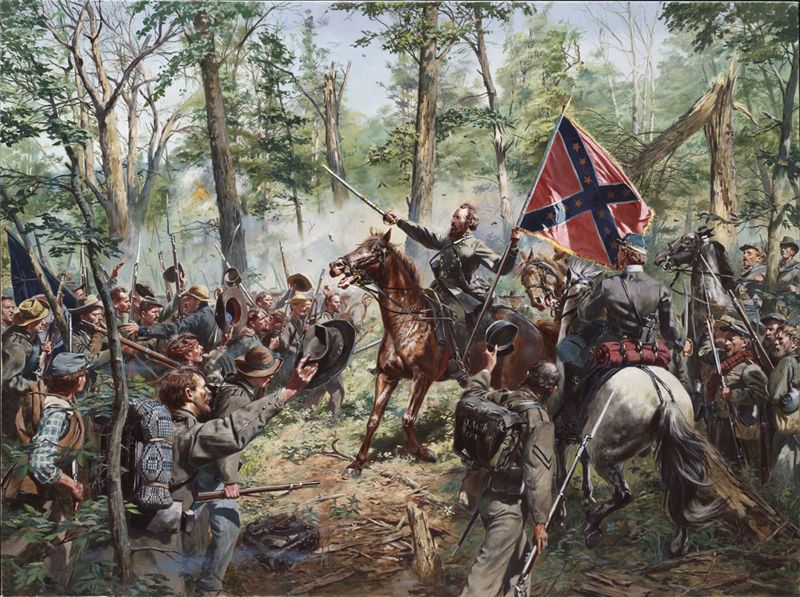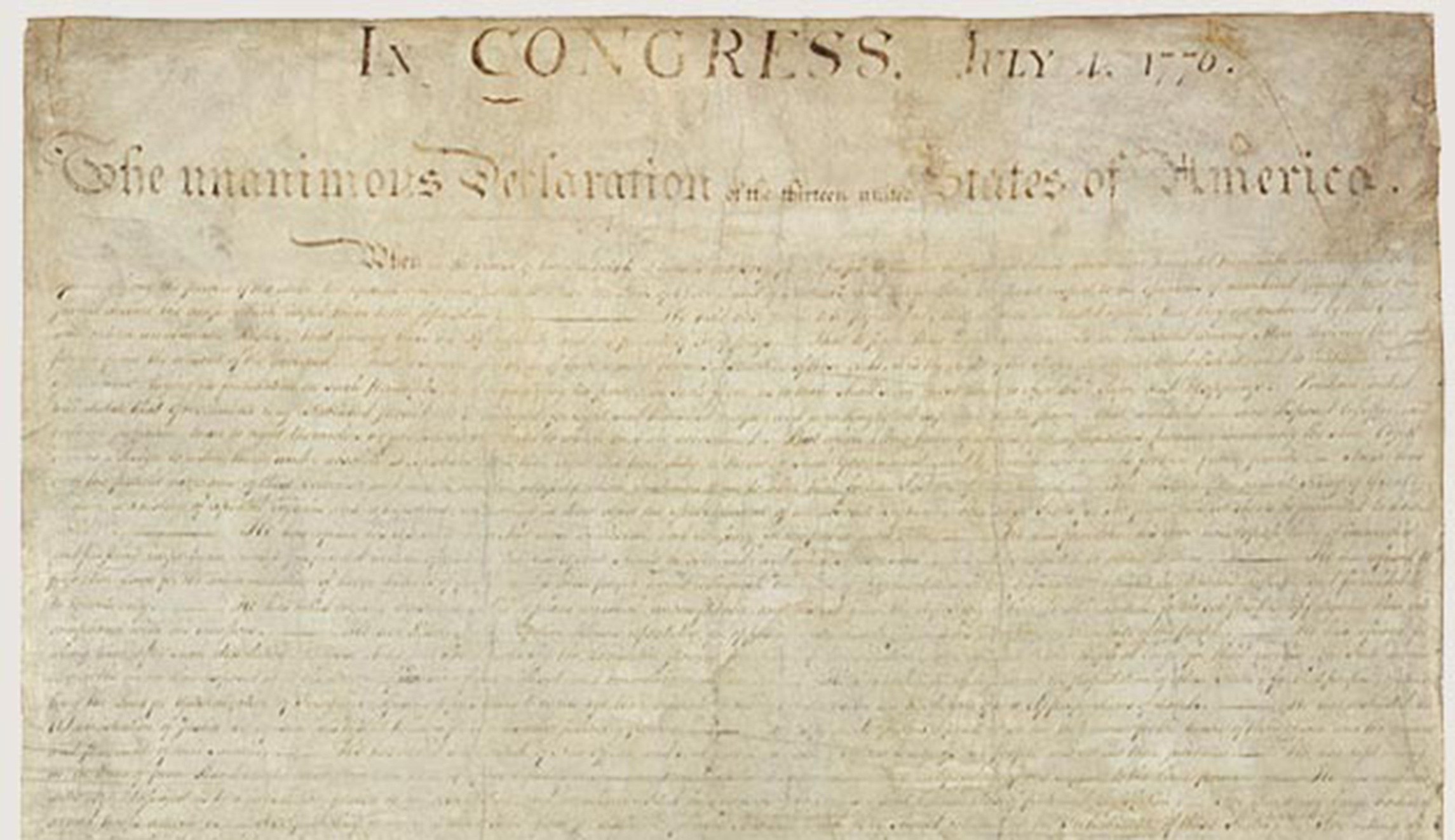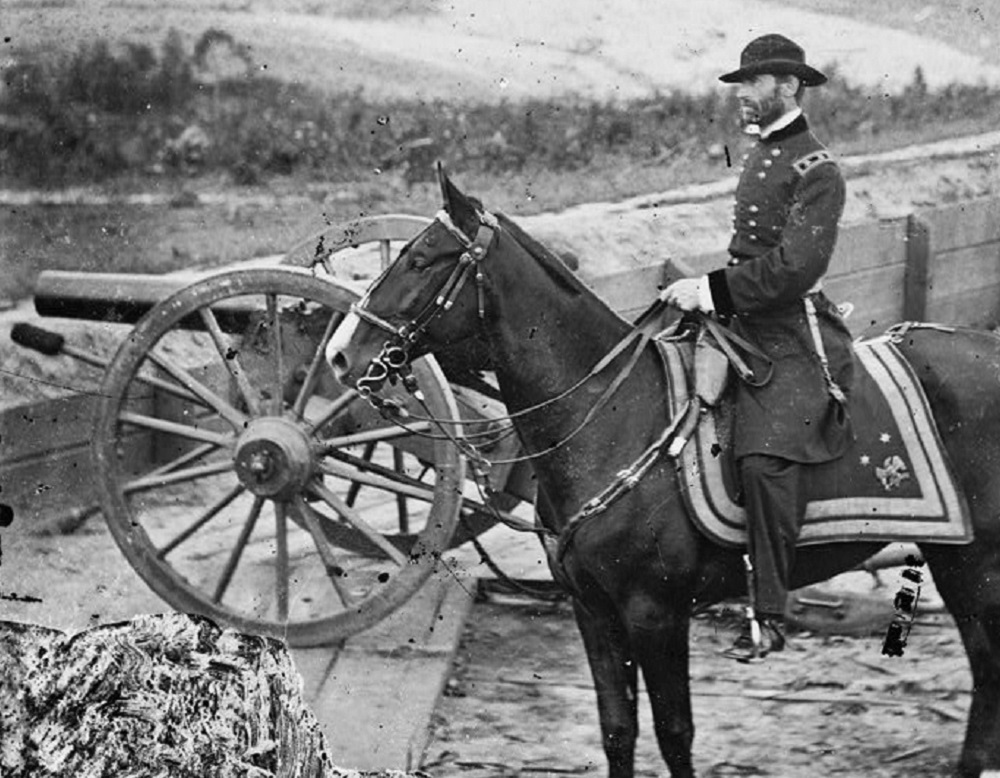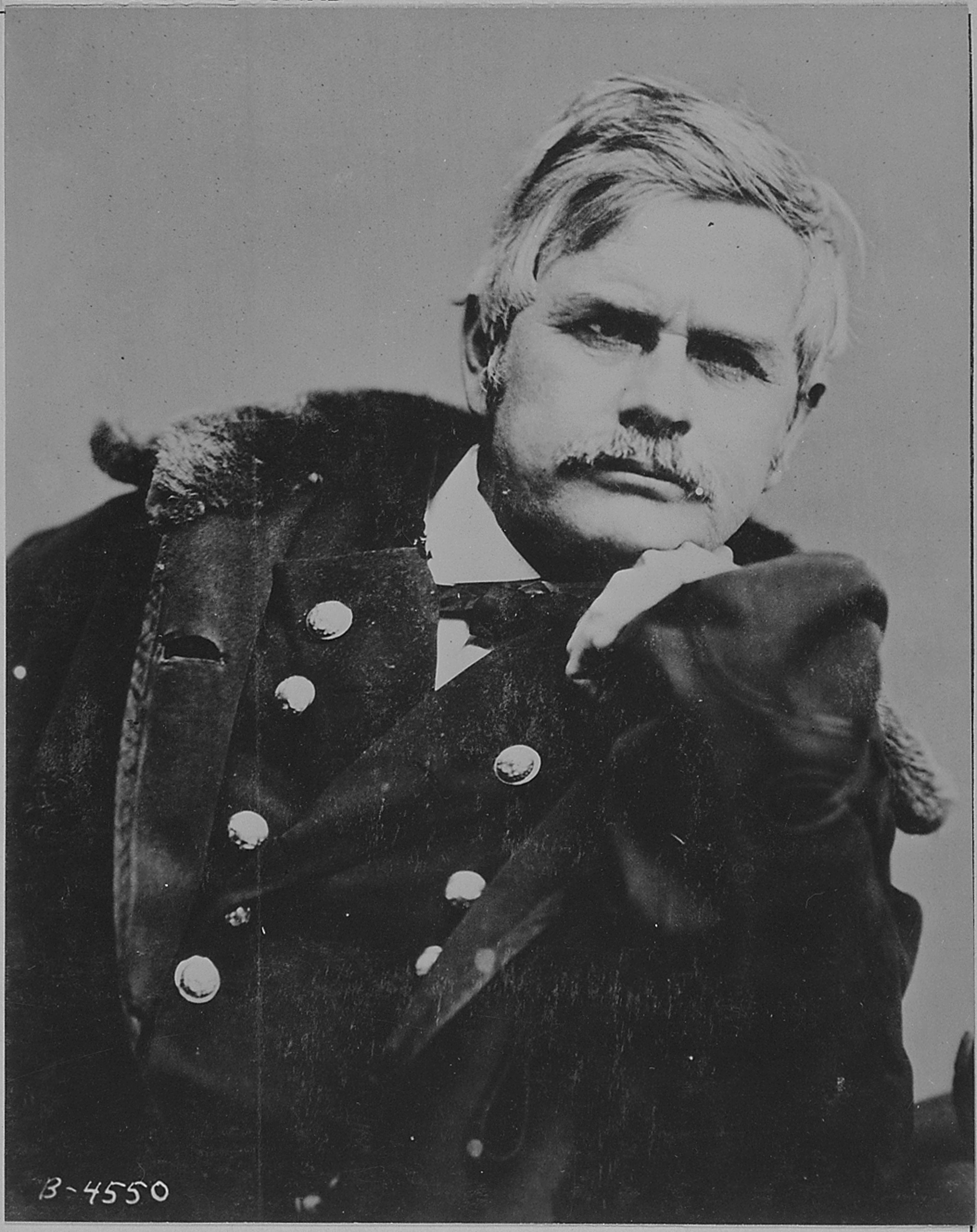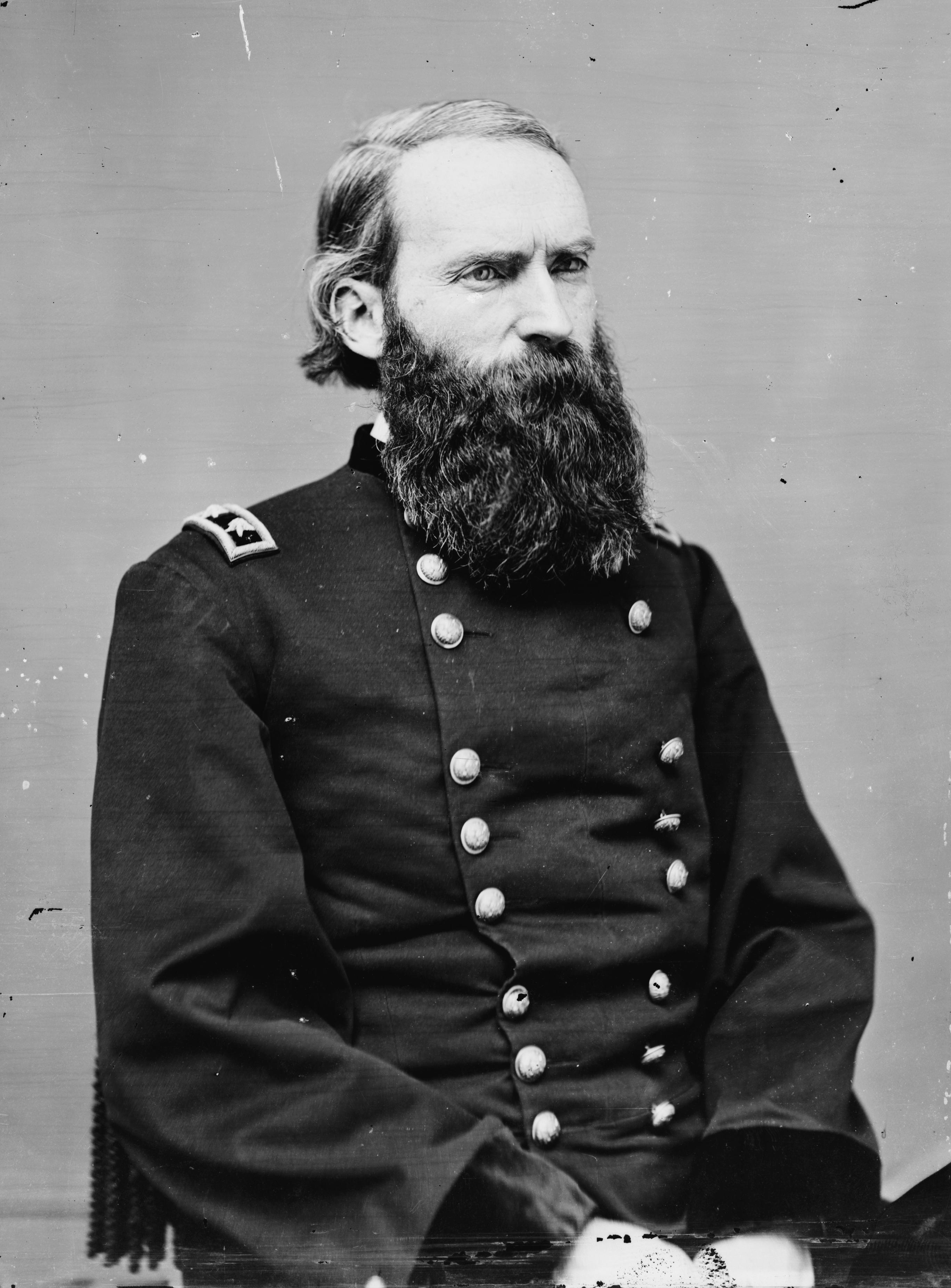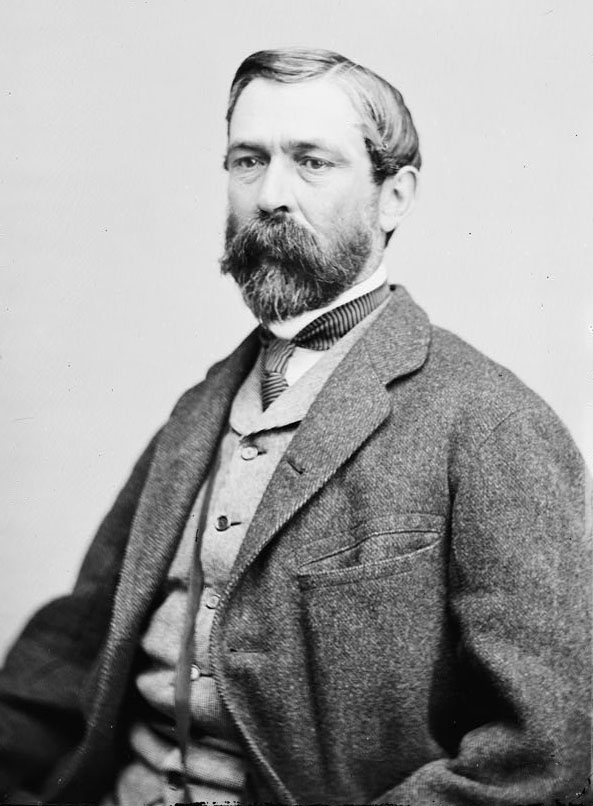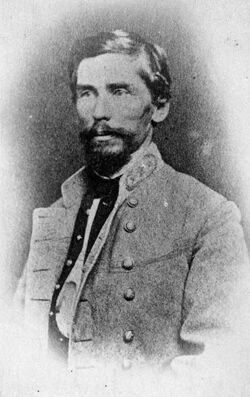Chapter Thirty-Five: The March on WashingtonWith the Confederate-American War started, President Conkling walked to General Butler's headquarters, and personally gave the order for the first prong of his two invasions to start. Butler would march his army for a final review through Philadelphia, and with that completed, moved in Maryland. The Army of the Susquehanna was divided into 6 corps, five of which were infantry, and one of cavalry. Leading the I Corps would be John A. McClernand, the II Corps under Nathaniel Banks, the III Corps under Alexander McCook, the IV Corps under Thomas Crittenden, and the V Corps under Daniel Butterfield. McClernand and Butterfield were appointed because they were pretty influential Democrats who had military experience and were not currently holding office. Banks, a veteran politician and War Republican, had been given the post to balance McClernand and Butterfield out somewhat. McCook and Crittenden received command because of their military experience. Leading Butler's Cavalry Corps would be Alfred Pleasonton, who had managed to gain some fame for his service of the Indian Wars out west. Under him were two divisions under George Stoneman, another veteran cavalryman, and Hugh J. Kilpatrick, a War Republican favored by Conkling. Many in Congress opposed Kilpatrick's appointment, as he was known to be in ill health, but Kilpatrick personally appealed to President Conkling, who ultimately convinced Congress to give him the rank he desired, and Conkling nominated him to the post.
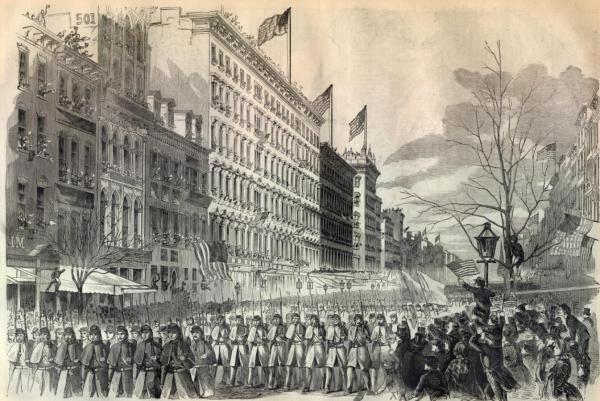
Soldiers of the Army of the Susquehanna marching through Philadelphia before their invasion of the CSA begins
Meanwhile, in the CSA capital of Washington, President Early and Generals Johnston and Jackson discussed strategy. Jackson's Army of Virginia contained 7 corps, six infantry and one cavalry. It should be noted, however, that a U.S. corps was larger than a CSA Corps, with a U.S. Corps consisting of four divisions, with each division consisting of four brigades, as opposed to a CSA corps, composed of three divisions, with each division being composed of four brigades. Thus, Butler's Army of the Susqenhanna outnumbered Jackson's Army of Virginia. Jackson's corps were the Virginia Corps under A.P. Hill, the North Carolina Corps under D.H. Hill, the South Carolina Corps under Stephen D. Lee, the Georgia Corps under John B. Gordon, the Maryland Corps under Isaac Trimble, and Alabama Corps under Robert E. Rodes, who despite being a Virginian, accepted Alabama's offer to lead their corps as he had lead Alabamians in the Civil War. Jackson's Cavalry Corps was under the command of Turner Ashby, consisting of the brigades of Thomas T. Munford, Thomas L. Rosser, James B. Gordon, and Pierce M.B. Young. By now, it was clear that the Army of the Susqehanna's goal was to capture Washington. General Johnston favored a defensive strategy, while Jackson wanted march his army out of Washington's defenses and attack Butler on advantageous ground. Ultimately, Early would decide to follow Jackson's advice, and ordered the Army of Virginia out into Maryland to confront Butler. View attachment 522181 View attachment 522182 View attachment 522184
View attachment 522181 View attachment 522182 View attachment 522184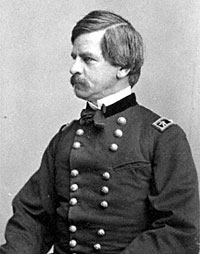

Butler's Corps Commanders: John McClernand, Nathaniel Banks, Alexander McCook, Thomas Crittenden, Daniel Butterfield, and Alfred Pleasonton
As both armies marched closer to each other, tragedy struck the Union war effort. Weakened by throat cancer and all the stress of helping to build and bring order to the Union armies, former General-in-Chief and current Secretary of War Ulysses S. Grant died in his rented Washington home. With Grant's death, Conkling lost his most capable cabinet member, a trusted ally, and probably the best man the nation could have hoped for to be their secretary of war during the Confederate-American War. Conkling would replace him with Robert Lincoln, a War Republican representative from Illinois. As Conkling pointed out, "The Lincoln family name was brought shame by the Civil War. Now let it be redeemed in this war." Unfornately, Lincoln was no Grant in terms of his abilities to fill the post. While by no means an incapable politician or military bufoon, Lincoln suffered from depression and lacked Grant's genius when it came to military affairs. He would have to do, however, as the first major battle of the Confederate-American War was rapidly approaching, as Butler continued his march south to Washington while Jackson rolled north to meet him.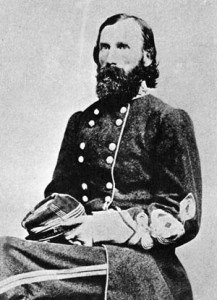
 View attachment 522185
View attachment 522185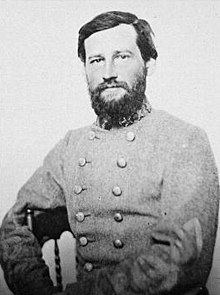
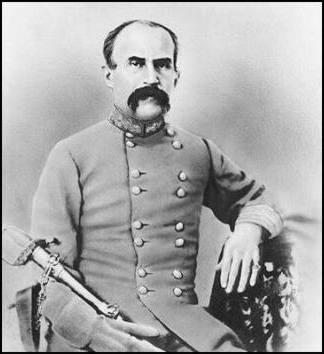 View attachment 522187
View attachment 522187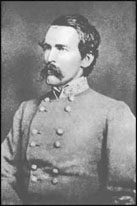
Jackson's Corps Commanders: A.P. Hill, D.H. Hill, Stephen D. Lee, John B. Gordon, Isaac Trimble, Robert E. Rodes, and Turner Ashby


Ulysses S. Grant and Robert T. Lincoln
Interesting role out. Ok lets see what kind of army you've assembled. Assuming Confederate Regiments have 800 Infantry, and 1,000 Cavalry, and an Artillery Battery has 4 guns, adding staff attachments the Army of Virginia would have a nominal strength, of 181,440 Infantry, With 4 divisions, 37,800 Cavalry, and 17,280 Gunners, for a total of 236,520 men. The army has 864 Foot guns, and 144 guns for the Horse Artillery, giving a total of 1008 guns. With supporting logistical units the Army has 354,780 men, with a total of 88,500 Horses. The U.S.A. Regiments have 1,000 Infantry, 1,200 Cavalry, and Batteries have 6 guns The Army of the Susquehanna has 252,000 Infantry, assuming 5 divisions the Cavalry has 56,700, and 28,800 gunners. The Army has 1,440 guns, with 270 guns for the Horse Artillery, for a total of 1710 guns. With logistical units the Army has 506,250 men with 126,500 Horses.
These numbers seem high for the U.S.A. in the opening phase of the war, and impossibly high for the Confederacy. The CSA only has 9,000,000 White People, they can only mobilize about 450-500,000 men for frontline duty. 354,000 men is almost 3 times what the CSA ever had in the Virginia Theater during the Civil War. The number of horses seems nearly impossibly high. The new weapons of the 1880's, and the experience of the Civil War have forced changed tactics on both sides. Lines are more extended, units more dispersed, making command, and control more difficult. It's nearly impossible for 1 man to personally direct a battle on this scale, over the distances involved. The use of telegraph, and telephone lines would become essential, giving the union an advantage.
The choices of senior commanders are completely unrealistic. The US President is a political fixer, who's appointed geriatric second, and third stringers from the Civil War. Grant was a great general, but a poor administrator, secretary of War would have been the wrong job for him. The Confederates are also far too old, with some in their 80's. The generals in this war should've been captains in the Civil War, not junior generals. Both sides would have serious leadership weaknesses, and problems with their political direction. This would be the start of a long hard war, with a lot of leadership shakeups ahead for both sides.
